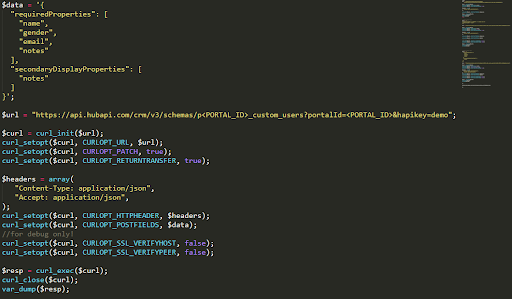Custom objects are literally a template: they provide a way to add a data set where you set the columns and data types, while gaining standard fields from a platform. In turn, this lets you design your own data structure to map your business process. Many CRM systems like HubSpot and Salesforce enable this functionality so you can take advantage of the system-level services in the CRM while also customizing the data for your needs.
We’ve added the ability to access HubSpot custom objects from the HubSpot Synapse. This means that in addition to the standard HubSpot objects like Deal, Company, and Person, you can now bring custom objects you’ve created in HubSpot into Syncari.
Example of custom object in HubSpot
Why did we add the ability to access HubSpot custom objects?
Today, we already support standard HubSpot objects. But suppose you want to create a new object within HubSpot to show the tickets a customer has open in JIRA. Or, maybe you want to create a hybrid process for onboarding a new customer. Adding a custom object in HubSpot makes it possible for you to manage that process alongside your existing HubSpot flows.
Connecting that custom object to Syncari lets you send important information to other teams. For instance, let’s say the finance team needs to know if an onboarding request has kicked off so they can book the revenue. At the same time, HubSpot can be told to update the status of that process to note the customer has paid.
Business isn’t conducted in a single SaaS solution, but your business data needs to be accessible, well-documented, and easy to update no matter where it is. Syncari makes that happen by connecting to your most important systems, understanding and documenting where you manage data, and distributing your data truth to the teams that need it.
Why Syncari?
Making HubSpot work with the rest of your revenue operations stack can be a tall order. Talk to us








